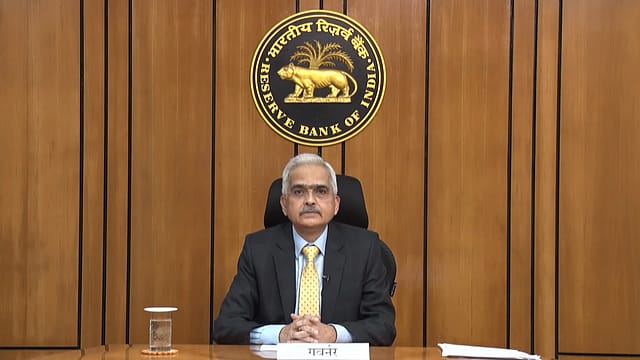Inflation needs to be tamed to keep economy resolute: RBI
ADVERTISEMENT

The Reserve Bank of India, in its monthly bulletin, has said inflation must be tamed to keep the economy resolute for sustained and inclusive growth. It said the biggest contribution to overall macroeconomic and financial stability as well as sustainable growth would come from maintaining price stability. The central bank says the fundamentals of the economy remain "strong" and that India is "well placed" to deal with the situation emanating from the global developments.
On the growth front, the RBI says the drivers of domestic economic activity, despite getting stronger, face headwinds from global spillovers. These are geopolitical tensions, elevated commodity prices, COVID-19 curbs in major economies, slow external demand, and tightening of global financial conditions on the back of monetary policy normalisation in advanced economies.
"These risks are evolving on the lines anticipated in the April 2022 statement and appear to be lingering," says RBI governor Shaktikanta Das.
Retail inflation, measured through the consumer price index (CPI), soared to a multi-year high of 7.79% in April as food and fuel prices saw further hikes during the month. This is the highest rate of inflation recorded in the Indian economy since May 2014. The high inflation was attributed to adverse spillovers from unprecedented high global food prices. The rate of inflation in March stood at 6.95%.
January 2026
Netflix, which has been in India for a decade, has successfully struck a balance between high-class premium content and pricing that attracts a range of customers. Find out how the U.S. streaming giant evolved in India, plus an exclusive interview with CEO Ted Sarandos. Also read about the Best Investments for 2026, and how rising growth and easing inflation will come in handy for finance minister Nirmala Sitharaman as she prepares Budget 2026.
As per the RBI, food inflation pressures are likely to continue in future as well. "The strengthening of inflationary impulses in sync with the persistence of adverse global price shocks poses upward risks to the inflation trajectory," the bulletin adds.
The RBI says all global high-frequency inflation indicators remain high. Indices of the Food and Agriculture Organisation (FAO) and the World Bank touched "historical highs" in March and remain elevated. Global wheat shortages are impacting domestic prices, even though domestic supply remains comfortable.
Edible oil prices are set to firm up further due to export curbs by many countries and due to loss of output due to the Russia-Ukraine war. Elevated feed costs are translating into escalation in poultry, milk and dairy product prices. Crude oil is hovering above $100 per barrel and this is prompting pass-through to domestic pump prices. Prices of processed food, non-food manufactured products and services may also go up due to a rise in input costs.
On liquidity and financial market conditions, the RBI said it'll ensure adequate liquidity in the system to meet the production requirements of the economy in support of credit offtake and growth.
The MPC in its off-cycle meeting in May had decided to increase the policy repo rate by 40 basis points to 4.40%. Consequently, the standing deposit facility rate stands adjusted to 4.15% and the marginal standing facility rate and the bank rate to 4.65%. The MPC also decided to remain accommodative, while focusing on withdrawal of accommodation to contain inflation. The next meeting of the MPC is scheduled during June 6-8, 2022, and it's expected that the central bank would go for another round of rate hikes.
The central bank has said to achieve a higher growth path, private investment needs to be encouraged through higher capital expenditure by the government which crowds in private investment. "Improving infrastructure, ensuring low and stable inflation and maintaining macroeconomic stability is critical for reviving animal spirits and spurring growth," says the central bank.
